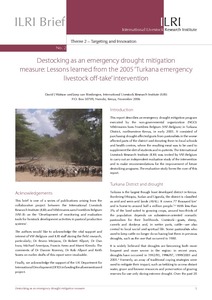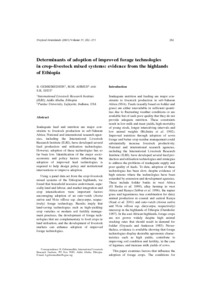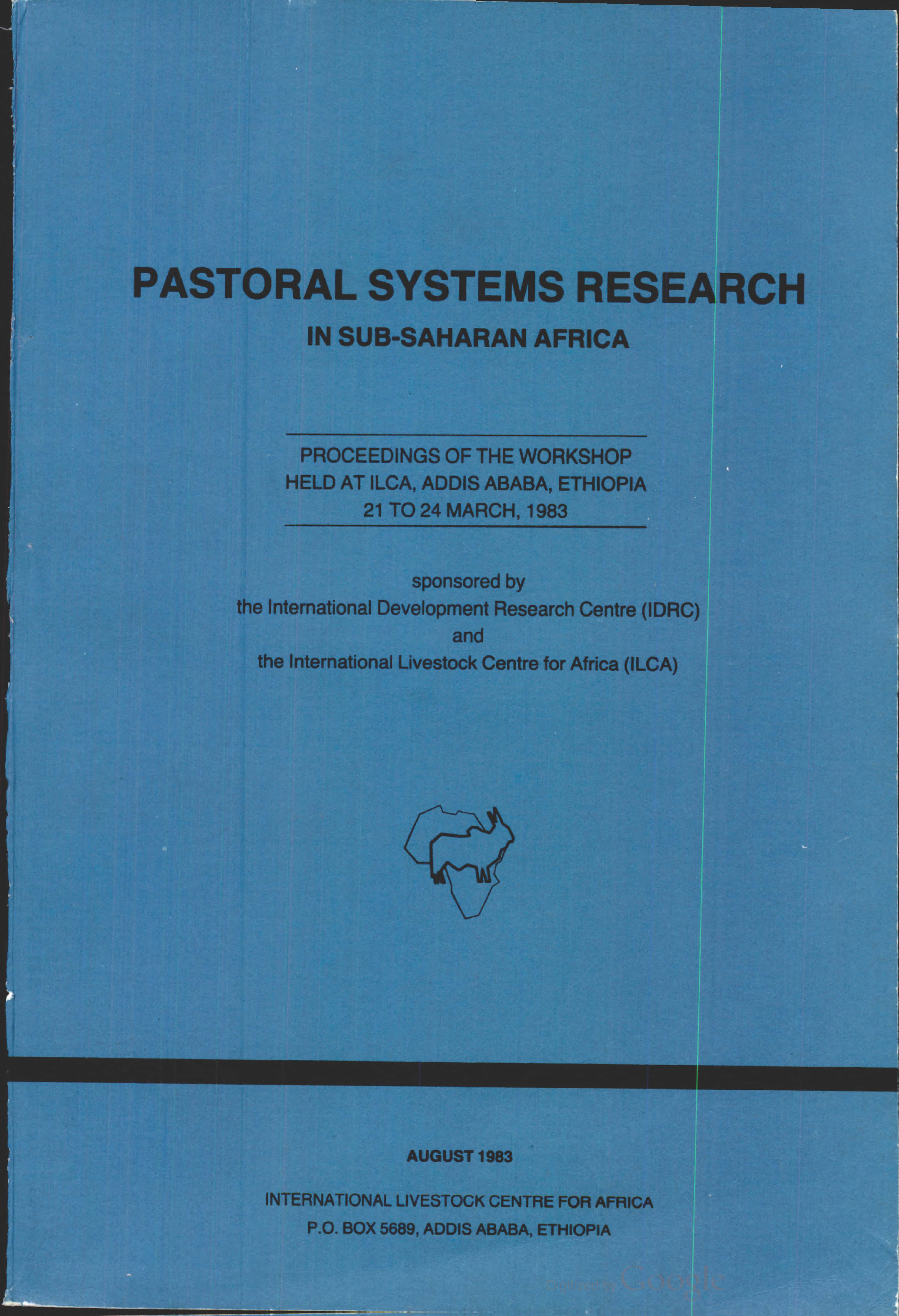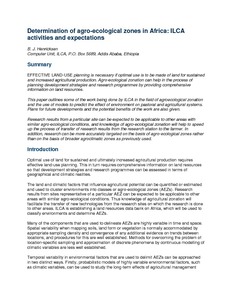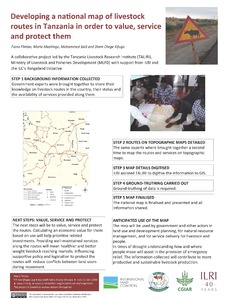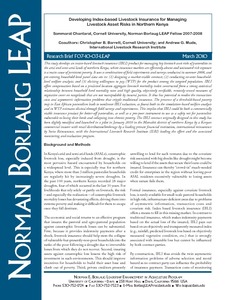Destocking as an emergency drought mitigation measure: lessons learned from the 2005 'Turkana emergency livestock off-take' intervention
This report describes an emergency drought mitigation program executed by the non-governmental organization (NGO) Vétérinaires Sans Frontières Belgium (VSF-Belgium) in Turkana District, northwestern Kenya, in early 2005. It consisted of purchasing drought-affected goats from pastoralists in the worse affected parts of the district and donating them to local schools and health centres, where the resulting meat was to be used to supplement the diet of students and in-patients.

